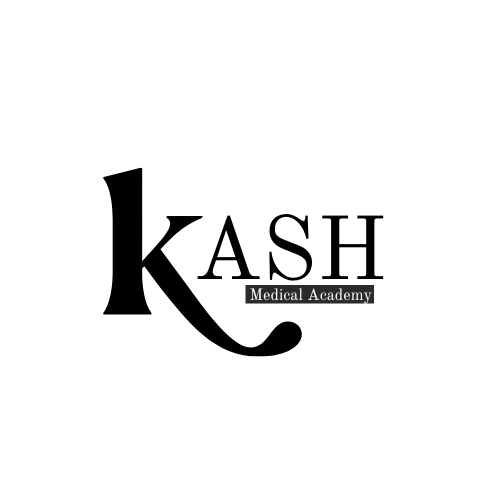
Sharpen Your Nursing Skills: Practice Previous Year CNET Nursing Entrance Exam Questions
Are you preparing for the CNET BSc Nursing Entrance Exam? Practicing previous year questions is a fantastic way to test your knowledge, identify areas for improvement, and familiarize yourself with the exam format. Nursing Aptitude Previous Year Questions CNET Exam Part-6
- The scientist, who first observed densely stained reticular structures near the nucleus is
(a) Robert Hooke
(b) Robert Brown
(c) Stras burger
(d) Camillo Golgi
- Which of these is not a function of Golgi apparatus?
(a) Material packaging
(b) Secretion
(c) Membrane transformation
(d) Site of protein synthesis
- Tissue is
(a) a group of similar cells together with their intercellular substances, which perform a specific function
(b) a single cell with specified functions
(c) composed of a single layer with cube-like cells
(d) None of the above
- Which of the following tissues provide a covering layer for some of the body parts?
(a) Connective tissues
(b) Muscular tissues
(c) Epithelial tissues
(d) Neural tissues
- Which one of the following statements is associated with epithelium?
(a) Cells are compactly packed with little intercellular matrix
(b) Cells are loosely packed with large
(c) It is highly vascularised
(d) It is a supporting tissue
- Digestion
(a) Burning of food
(b) Oxidation of food
(c) Hydrolysis of food
(d) Breakdown of food
The correct answer is (c) Hydrolysis of food. Digestion is the process of breaking down food into smaller components that can be absorbed by the body. This process involves the use of enzymes, which are proteins that catalyze specific chemical reactions.
- Nutrition
(a) A process to obtain necessary energy and Substances growth
(b) A process to obtain energy from foods
(c) A process to supply the necessary nutritive elements to body
(d) A sum total of processes which provides the necessary nutritive element for growth, maintenance and to meet the need of energy
The correct answer is (d) A sum total of processes which provides the necessary nutritive element for growth, maintenance and to meet the need of energy. Nutrition is the process by which organisms obtain the nutrients they need to survive and grow. This process includes the ingestion, digestion, absorption, transport, utilization, and excretion of nutrients.
- Excess of carbohydrates
(a) Changed into proteins
(b) Changed into glycogen
(c) Aminated
(d) Passed out in stool
The correct answer is (b) Changed into glycogen. Excess of carbohydrates are converted into glycogen, which is a storage form of glucose. Glycogen is stored in the liver and muscles, where it can be broken down into glucose when needed.
- Conversion of excess carbohydrates into fat
(a) Lipogenesis
(b) Glycogenolysis
(c) Glycogenesis
(d) None of these
The correct answer is (a) Lipogenesis. Lipogenesis is the process by which carbohydrates are converted into fat. This process occurs in the liver and adipose tissue.
- Difference between cow’s milk and buffalo’s milk
(a) Protein and fat
(b) Protein sugar
(c) Protein and lactose
(d) Mineral salts
The correct answer is (a) Protein and fat. Cow’s milk and buffalo’s milk differ in their protein and fat content. Cow’s milk has a higher protein content than buffalo’s milk, while buffalo’s milk has a higher fat content.
- Classification of vitamins
(a) Physicochemical properties
(b) Solubility in water and organic solvents
(c) Solubility in fats and water and solubility in fats and
(d) Physicochemical properties water
The correct answer is (b) Solubility in water and organic solvents. Vitamins are classified on the basis of their solubility in water and organic solvents. Fat-soluble vitamins are absorbed along with fat, while water-soluble vitamins are absorbed directly into the bloodstream.
- Keratomalacia
(a) Vitamin-A
(b) Vitamin-B
(c) Vitamin-K
(d) Vitamin-C
The correct answer is (a) Vitamin-A. Keratomalacia is a condition that can lead to blindness if it is not treated. It is caused by a deficiency of vitamin A.
- Vitamin-A
(a) Regulates metabolism of calcium and phosphorus
(b) Plays an important role in healing of wound
(c) Animal liver is rich in vitamin-A
(d) Facilitates DNA repair
The correct answer is (b) Plays an important role in healing of wound. Vitamin A is important for the healing of wounds and the maintenance of healthy skin and eyes.
- Antixerophthalmic vitamin
(a) Vitamin-A
(b) Vitamin-D
(c) Vitamin-E
(d) Vitamin-K
The correct answer is (a) Vitamin-A. Vitamin A is an antixerophthalmic vitamin, which means that it prevents night blindness.
- Matching of vitamin, nature and deficiency disease
(a) Vitamin-A-Fat soluble- Night blindness
(b) Vitamin-K-Fat soluble-Beri-beri
(c) Vitamin-A-Fat soluble-Beri-beri
(d) Vitamin-K-Water soluble-Pellagra
The correct answer is (a) Vitamin-A-Fat soluble- Night blindness. Vitamin A is a fat-soluble vitamin that is necessary for vision. A deficiency of vitamin A can lead to night blindness.
| Social Platforms | Social Links |
|---|---|
| Join Group | |
| Follow | |
| You Tube | Subscribe |
| App | Download App |




